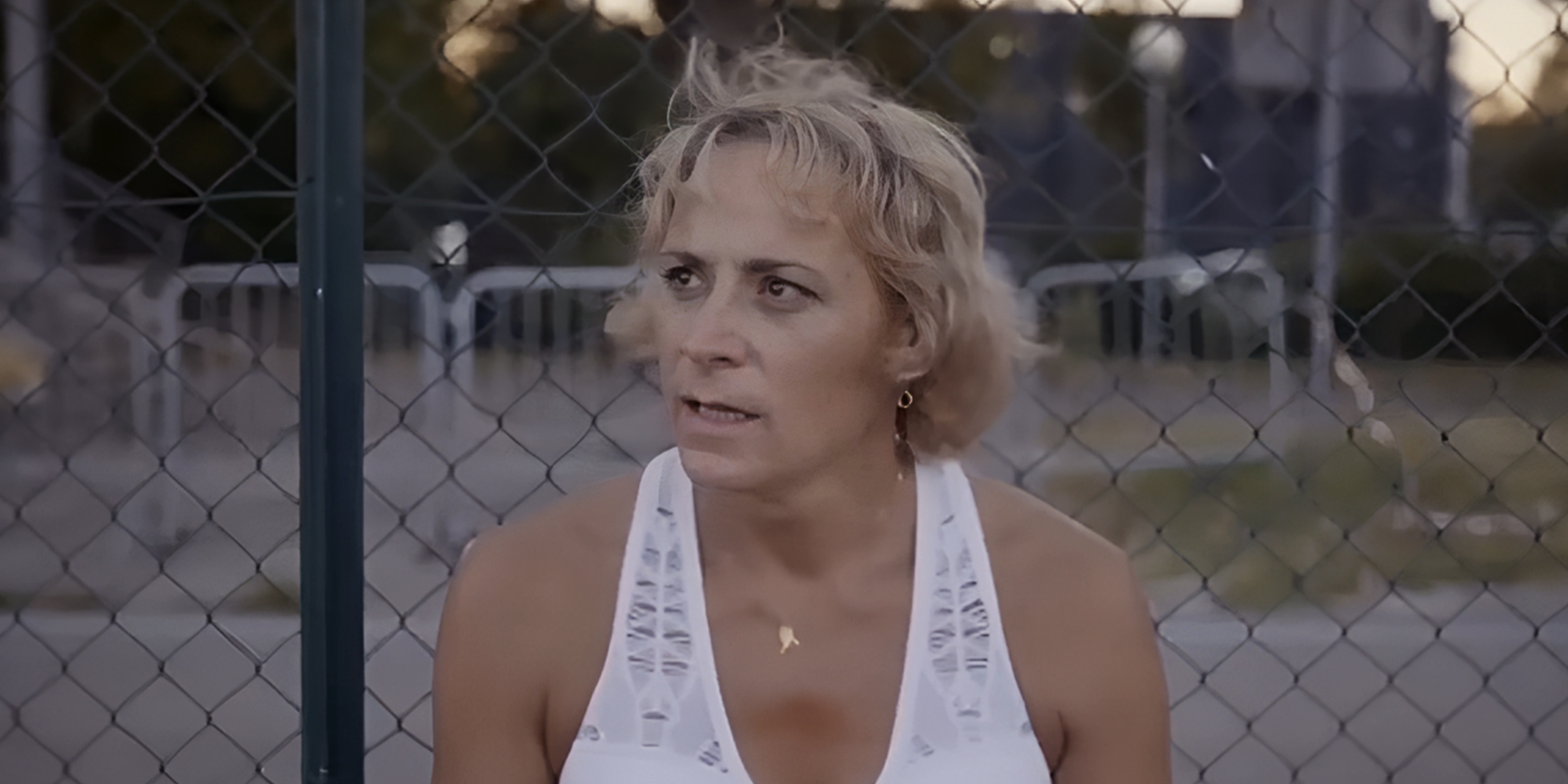
First Openly Transgender Lady Selected for Paris Paralympics 2024 – How Did She Look before Transition?
Valentina Petrillo, a disabled sprinter, has made history as the first transgender woman selected to compete in the Paralympic Games to be held this year. Supported by her wife, she endured a challenging transition. Here is a glimpse into her journey and transformation.
Valentina Petrillo is a para-athlete who hails from Naples, Italy, within the tough neighborhood of San Carlo all'Arena. Growing up, Petrillo always had a deep passion for sports, showing a natural talent across various disciplines, with a particular inclination toward running.
In her neighborhood, among friends, Petrillo became well-known for her exceptional speed. At just seven years old, she developed a profound admiration for athletics.
She was particularly inspired by Pietro Mennea's triumph at the 1980 Moscow Olympics, which she still considers the most beautiful race in athletics history.
It was during this period that her dream began to take shape—a dream that felt impossible to achieve. Petrillo yearned to wear the Italian national team's jersey and compete in the Olympics, but not as a man—as a woman.
However, she found herself suppressing her true identity, often projecting a harsh and aggressive male persona, battling against the woman she knew she was inside. From the age of nine, the future sports star knew she was a woman.
While struggling with identity issues, Petrillo encountered yet another stumbling block. In 1987, at the age of 14, her life took a challenging turn when she was diagnosed with Stargardt disease, leaving her visually impaired.
Stargardt disease is an inherited eye condition that leads to vision loss, primarily affecting children and young adults. It is passed down from parents to their children through genetic inheritance.
Petrillo's visual abilities are restricted to just 1/50th of the normal range, hence she is regarded as disabled. Therefore, becoming a Paralympian instead of an Olympian. The diagnosis was devastating for the athlete, forcing her to quickly reassess her childhood dreams, though her passion for athletics never wavered.
Despite her determination, when she attempted to join an athletic club in Caserta, she faced rejection, being told that she "ran like a woman." At the age of 20, Petrillo moved to Bologna to pursue a degree in computer science at the Institute for the Blind.
In Bologna, she was introduced to the world of Paralympic sports. As the 1996 Atlanta Paralympics approached, her coaches believed she had a strong chance of participating.
However, she chose not to pursue this opportunity because she didn't feel complete or comfortable as a man. Although Petrillo spent a few years in athletics, she eventually transitioned to low-vision five-a-side soccer.
This is where she excelled, earning multiple spots on the national team. She narrowly missed competing in the 2016 World Cup in South Korea due to an injury. Petrillo eventually returned to athletics because her operated knee no longer allowed her to perform certain movements necessary for soccer.
She found it increasingly difficult to remain in masculine spaces or engage in such a physically demanding sport. By this time, the Italian native was beginning to confront her gender dysphoria.
In 2018, after a stellar season where she achieved all her personal bests, Petrillo decided to leave the men's world behind. That October, while in Jesolo, she participated in her final men's sprinting competition.
That same year, with her wife's support, Petrillo started living as a woman. The following year in January, she began her hormone therapy, which affected her both physically and emotionally.
Petrillo revealed that her metabolism changed and she became less energetic. However, this didn't prevent her from winning competitions. Between 2015 and 2018, the sportswoman won 11 national titles in the male T12 category, which is designated for athletes with visual impairment.
She fully transitioned in 2019. For the first few months, she put on 10lbs. "I can’t eat the way I did before, I became anaemic, my haemoglobin is low, I'm always cold, I don't have the same physical strength. [...] I'm not the same as before," she once explained.
Six months into her treatment, Petrillo experienced a decline in her performance, losing approximately 11 seconds in the 400-meter race and 2.5 seconds in her specialty, the 200-meter race. However, it was a sacrifice she willingly accepted.
As a sportsperson, Petrillo found it challenging to accept that she wouldn't achieve the same speeds as before. She had to come to terms with this compromise, recognizing it as a necessary step for her happiness.
The athlete shared her motto: "Better to be a slow happy woman than a fast unhappy man." Determined not to abandon competing, Petrillo found that athletics had always been her refuge; her legs became the strength that her eyes could not provide.
Sports had always been a means of inclusion for her as a person with disability, and later, with the support of Fispes, as a transgender athlete. In 2020, once again in Jesolo, Petrillo fulfilled her long-held dream by running alongside women.
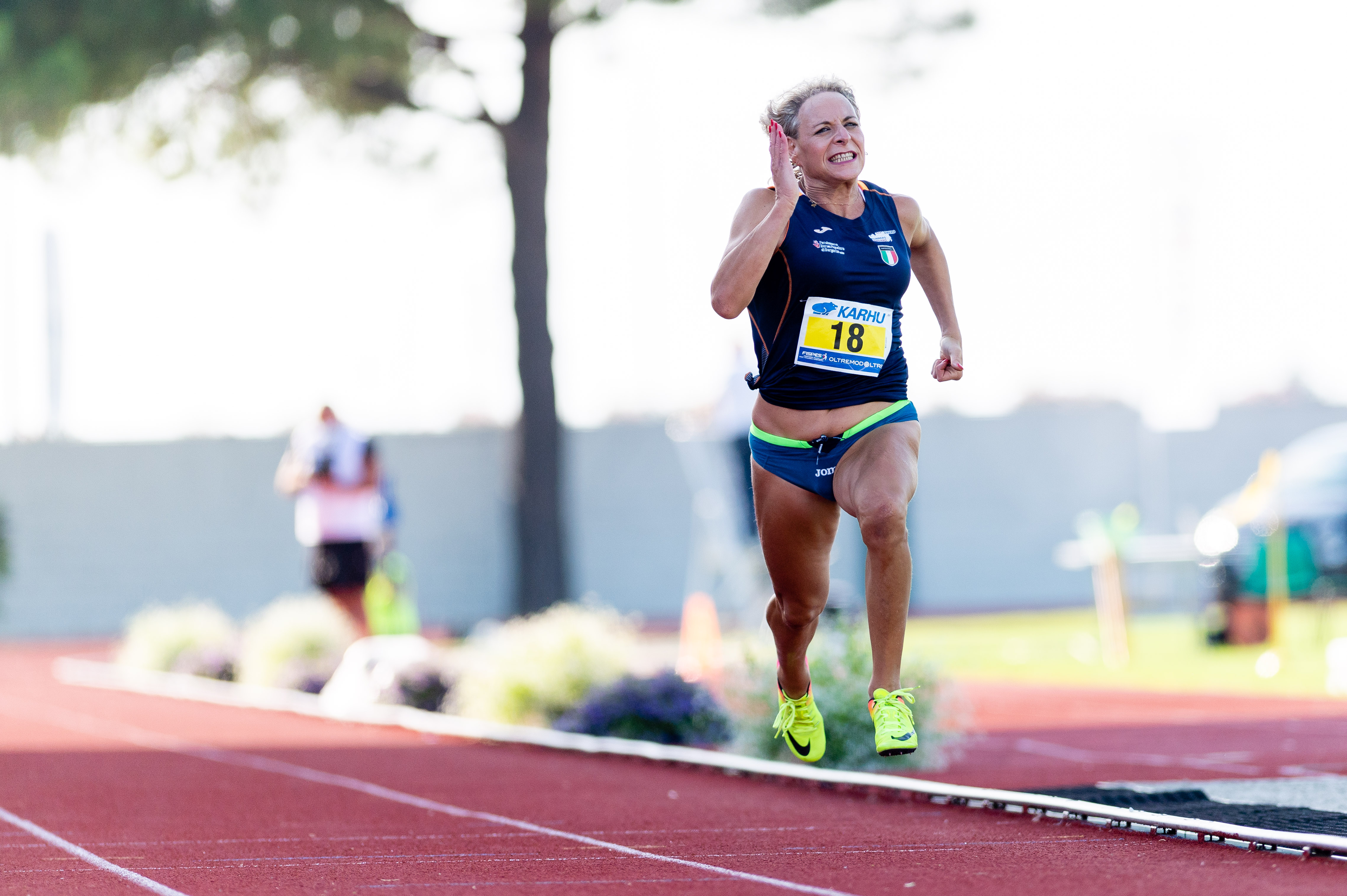
Valentina Petrillo competes in the 100m T12 event during the Italian Paralympic Athletics on September 11, 2020, in Jesolo, Italy. | Source: Getty Images
That June, she achieved yet another milestone by wearing the jersey of the Italian national team at the European Championships in Bydgoszcz, Poland. She made her country proud once again when she won bronze medals in the women's 200m and 400m events at the World Para Athletics Championships in 2023.
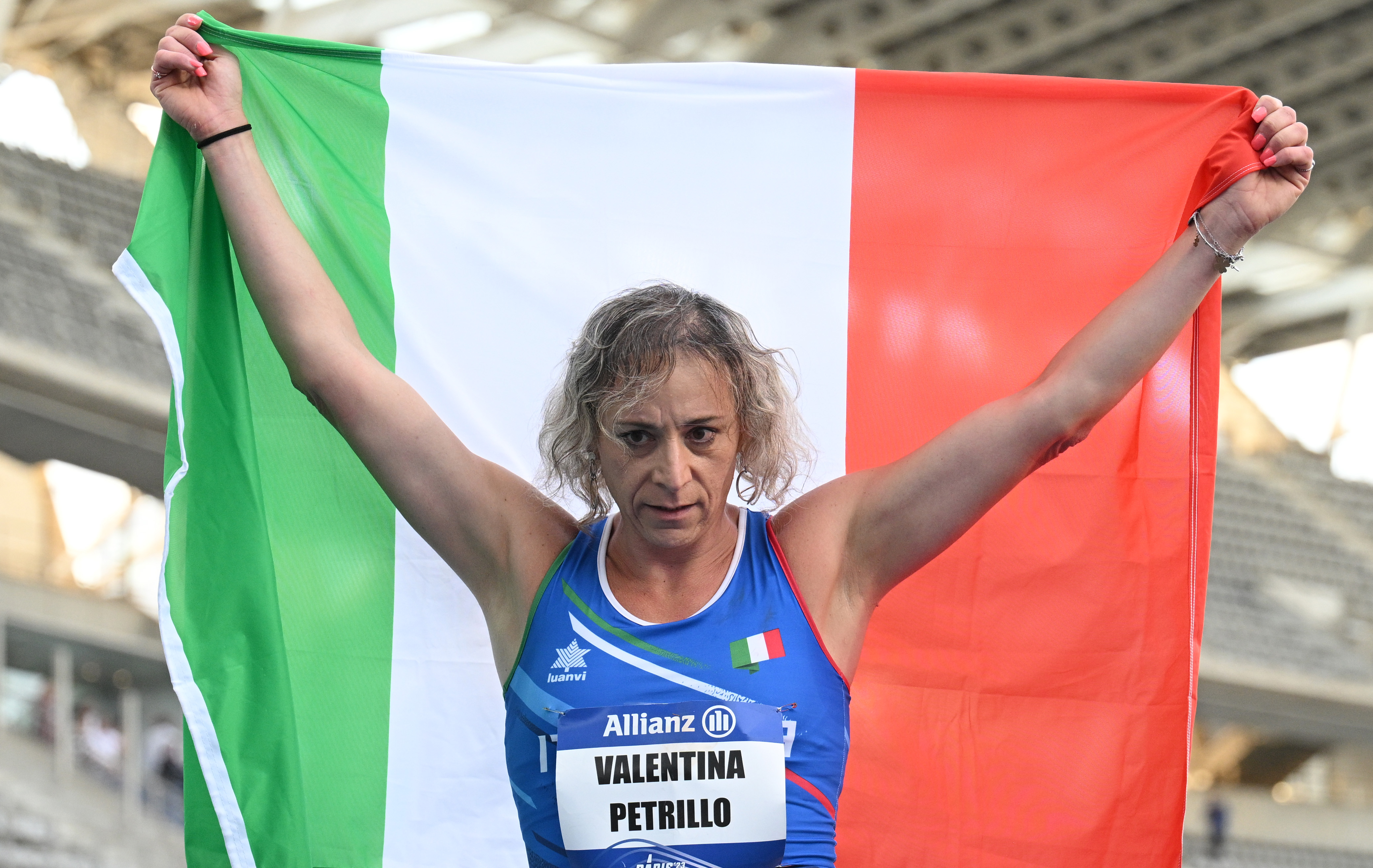
Valentina Petrillo celebrates after the Women's 400m T12 Final at the Para Athletics World Championships in Paris on July 13, 2023. | Source: Getty Images
That same year, World Athletics imposed a ban on transgender women from competing in the female category at international events. The governing body’s president, Lord Coe, announced that no transgender athlete who had undergone male puberty would be allowed to participate in female world ranking competitions.
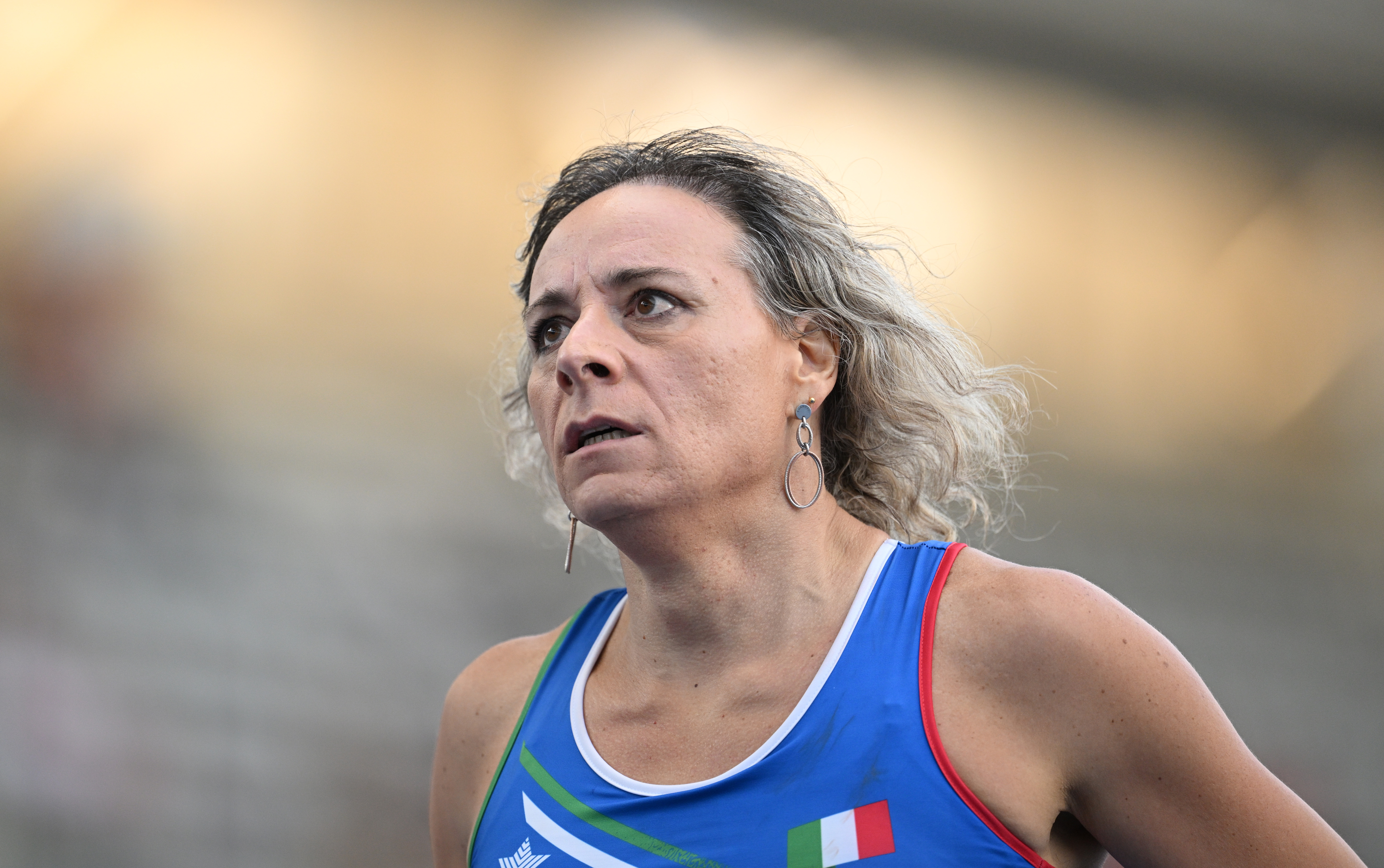
Valentina Petrillo competes in the Women's 400m T12 Final at the Para Athletics World Championships in Paris on July 13, 2023 | Source: Getty Images
To further explore the transgender eligibility guidelines, a working group was to be established. Coe clarified, "We're not saying no forever." Under the previous regulations, World Athletics required transgender women to lower their blood testosterone levels to a maximum of 5nmol/L.
They also asked them maintain this threshold consistently for 12 months before being eligible to compete in the female category. Coe emphasized that the decision to change these rules was "guided by the overarching principle which is to protect the female category."
Currently, there is no unified stance in the world of sports regarding transgender inclusion. The International Paralympic Committee (IPC) permits international sport governing bodies to establish their own policies on the matter.
Rules aside, Petrillo is now poised to make history as the first openly transgender athlete to compete at the Paralympic Games, having been chosen to represent Italy in Para-athletics in Paris.
The 50-year-old sprinter, who competes in the women's T12 classification for athletes with visual impairments, will race in the T12 200m and 400m events. Petrillo stated that her participation in the Games would serve as an "important symbol of inclusion."
When asked about her reaction to being selected for the Paralympics, Petrillo expressed that she had been waiting for this moment for three years and had done everything possible during that time to earn it.
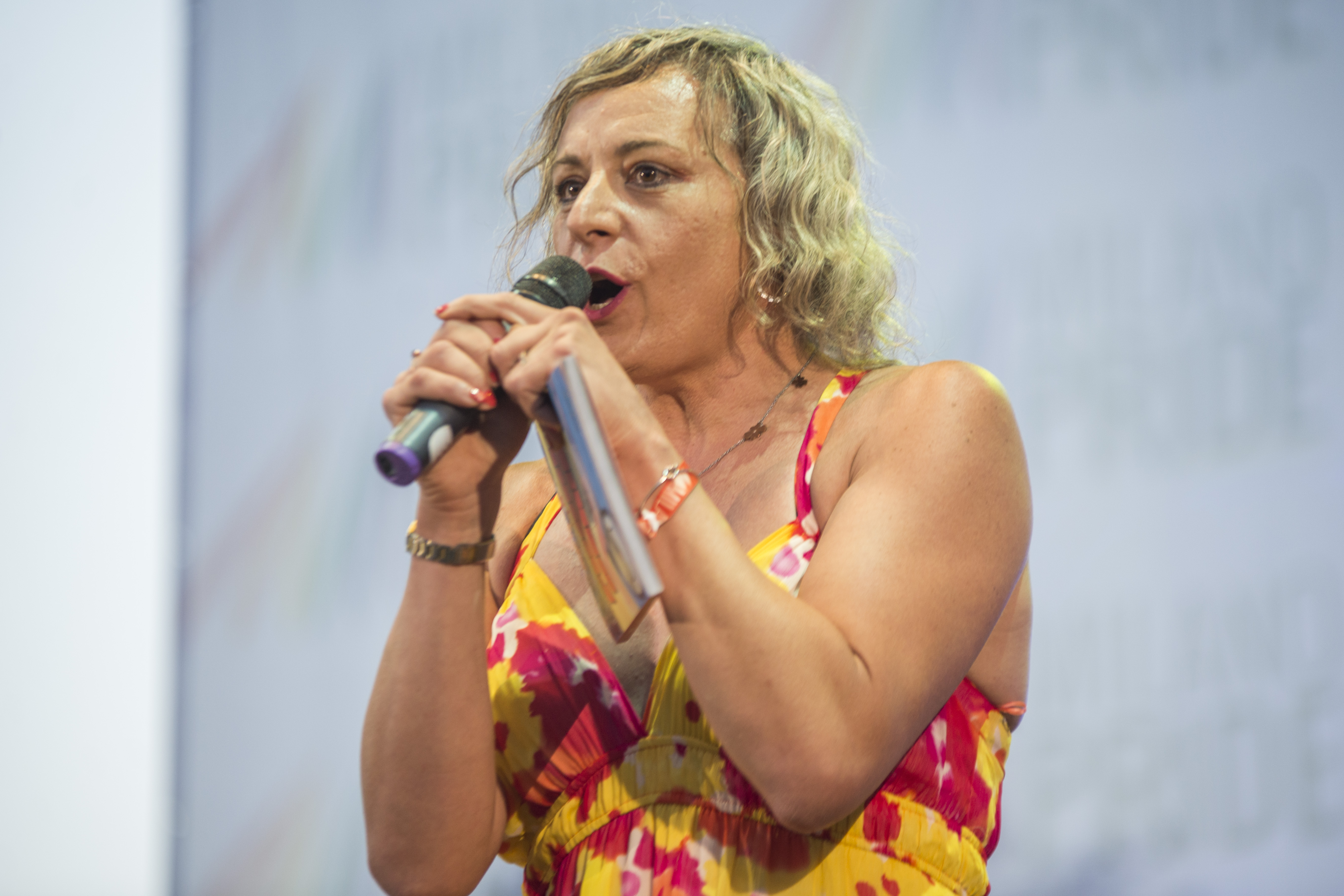
Valentina Petrillo on stage during the Milano Pride 2023 closing event at Arco Della Pace on June 24, 2023, in Milan Italy | Source: Getty Images
She emphasized that she deserved the selection and expressed her gratitude to the Italian Paralympic Federation and the Italian Paralympic Committee for their unwavering belief in her, both as a person and as an athlete.
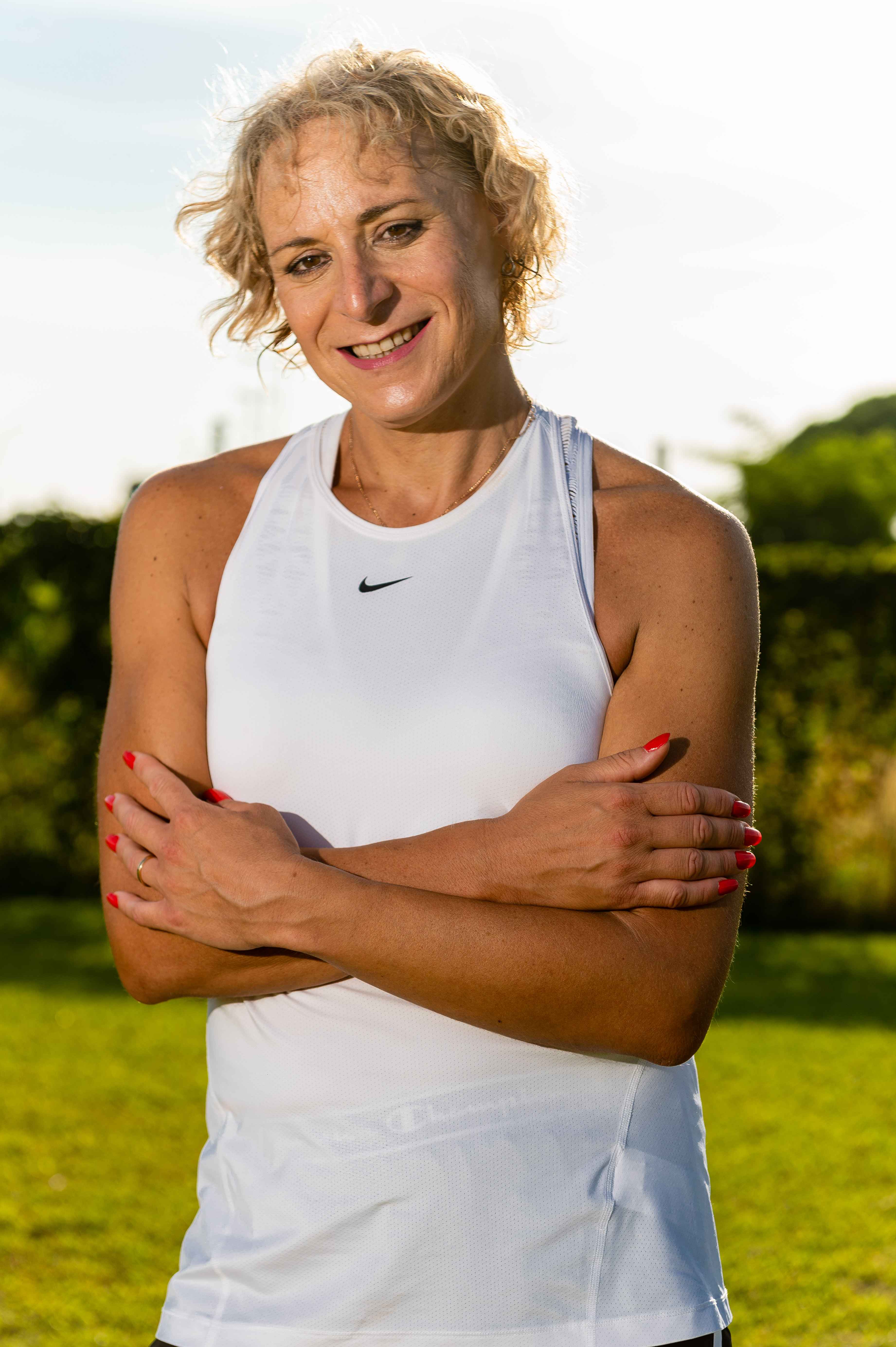
Valentina Petrillo during the Italian Paralympic Athletics on September 11, 2020, in Jesolo, Italy | Source: Getty Images
Petrillo highlighted the historic significance of being the first transgender woman to compete at the Paralympics, recognizing it as an important symbol of inclusion. She acknowledged that while many people will have questions, only a small minority will truly understand her journey.
When asked what she would say to those who oppose her presence in Paris, considering it unfair, Petrillo stated that this is not merely a lifestyle choice for her—it is her true identity.
She argued that the way she is, like all transgender individuals who do not identify with their biological gender, should not be subject to discrimination, just as race, religion, or political ideology should not be discriminated against.
Petrillo pointed out that sports, which often impose rules based on a binary way of thinking, fail to consider this reality. She asserted that it is the responsibility of the sporting world to find a solution, and excluding transgender athletes is not that solution.
She concluded by noting that in the seven years since transgender athletes have been allowed to compete in the female category, there have been very few instances where they have stood out for their sporting achievements.
"I still find it hard to believe it and I'm keeping my feet on the ground because my chance to participate in Tokyo was missed by a whisker. I will only start thinking about the Paris Games once I arrive in France," Petrillo said in a 2024 interview.
Fans have commended her for her bravery on social media. "Stunning and brave," commented one user following the news of her upcoming participation. Another said, "She is so talented. We are so honored to witness her great talent." Someone else added, "Woman of the year right there."
While she rocks short blonde hair presently, Petrillo used to look fairly different before she transitioned. She had short brown hair and was almost bald with a clean-shaven look.
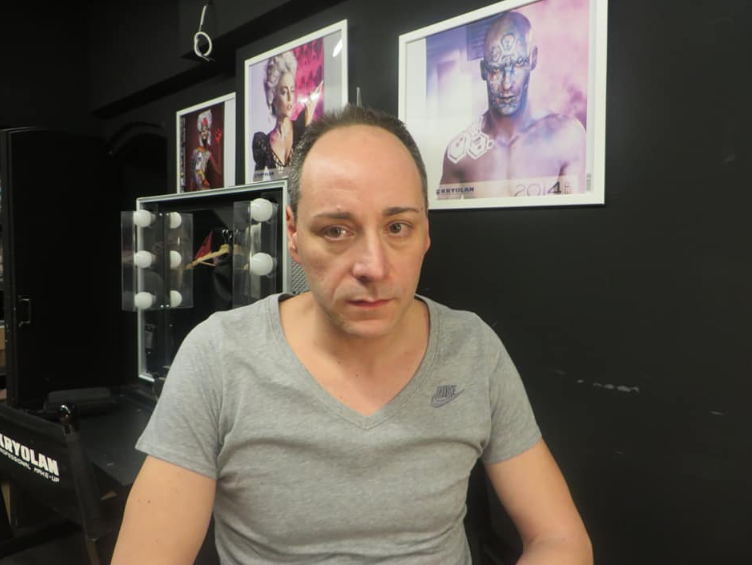
Valentina Petrillo before her transition, dated June 22, 2021 | Source: Facebook/Fispes
In the image below, the Paralympian also used to have thick eyebrows which now seem to be trimmed off a bit, judging by her current pictures on social media.
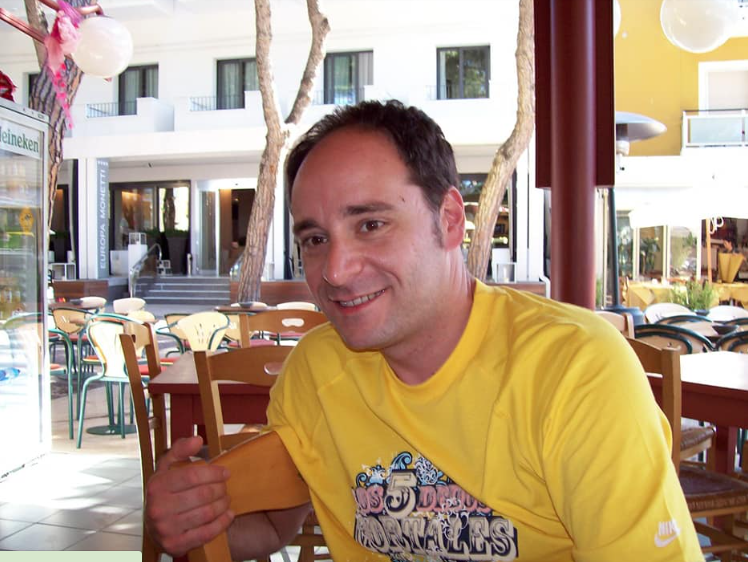
Valentina Petrillo before her transition, dated June 22, 2021 | Source: Facebook/Fispes
Moreover, the baldness on Petrillo's head is no longer apparent either as the multi-gold medalist now has full hair on the front of her head unlike before.
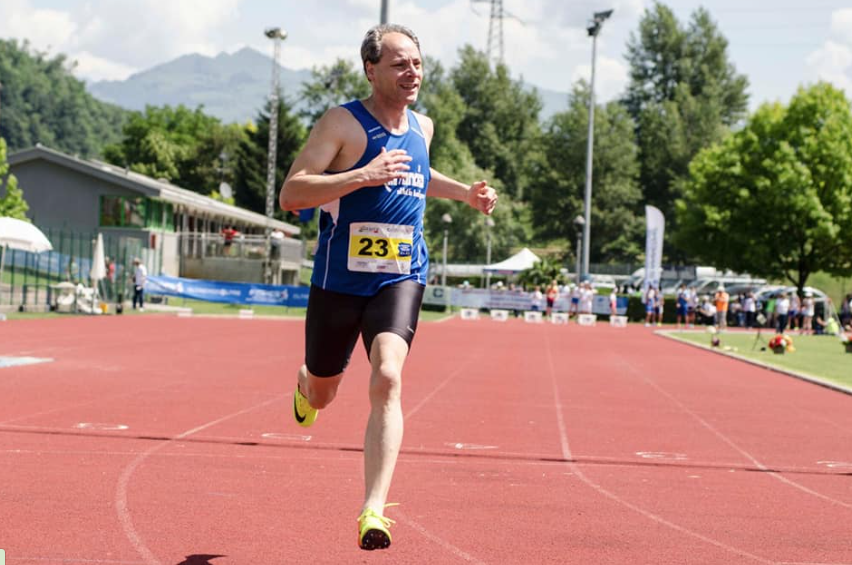
Valentina Petrillo before her transition, dated June 22, 2021 | Source: Facebook/Fispes
Additionally, the para-athlete world champion now puts on makeup unlike before she transitioned. Red lipstick seems to be her go-to and she often opts for a manicure with a red nail polish.
Valentina Petrillo’s path to the Paralympic Games is a powerful symbol of resilience and inclusion. As she prepares to make history in Paris, her journey challenges traditional sports norms and inspires others, redefining what it means to be an athlete.
The information in this article is not intended or implied to be a substitute for professional medical advice, diagnosis or treatment. All content, including text, and images contained on news.AmoMama.com, or available through news.AmoMama.com is for general information purposes only. news.AmoMama.com does not take responsibility for any action taken as a result of reading this article. Before undertaking any course of treatment please consult with your healthcare provider.
